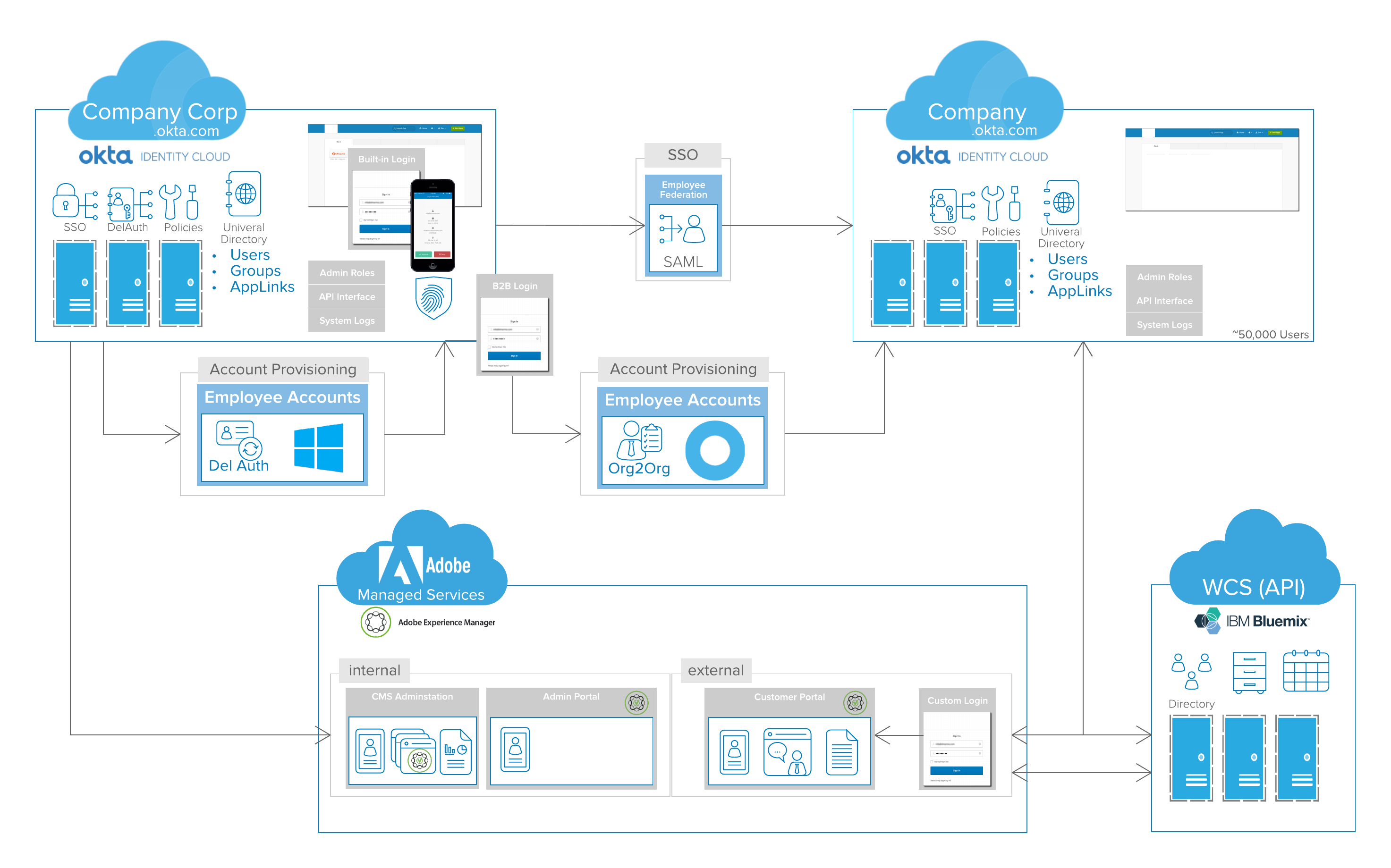
8 common time killers for sales engineers (and ways to win that time back)
Lucid Content
Reading time: about 9 min
Topics:
You’re a sales engineer in high demand. You feel outnumbered in your sales org, and you’re desperately trying to find more hours in the day. While we haven’t been able to generate more hours in the day, we have scrutinized every stage of the sales cycle to identify where you’re losing time in the sales engineering cycle and how you can get it back.
Here’s how you can take eight common time killers and make them work to your benefit as a sales engineer.
1. The sales rep didn’t gather enough discovery information—or the information never made it to you
Since you weren’t present for the initial conversations with the client, you have to rely on the sales rep to gather and then hand off discovery information—and it doesn’t always happen. So you waste time digging for more information or you accept that you’ll need to run through a standard list of features and hope something resonates with the client. Slim chance.
Solution: Create a form for discovery information
If the sales reps aren’t giving you the discovery information you need to create impactful demos, create a form that contains all the questions you want answered. Require the rep to fill out all the sections before you’ll jump on a call with a client.
Remember that you have the power—you’re allowed to establish clear boundaries and push back when you don’t receive the information essential to do your job well. Explain to sales reps that you want to make sure this deal closes, and you’ll waste time (and risk losing the deal) if you speak to the wrong person on the phone or go in without knowing the customer’s needs or current processes.
2. Discovery information lacks power without context.
Even with your discovery information, you may have some lingering questions about this potential client. Discovery information points you toward the business challenges that the prospect is facing, but since it’s often focused on one contact, it won’t show you the full context of the organization. Your sales reps know who will make the decision, who will be more receptive to your solution, who can convince whom.
Solution: Take the initiative to sync with sales reps
If the sales rep doesn’t take the lead in handing off discovery information, you should take the initiative, especially for key deals. To supplement the discovery information, ask your rep to show you each of the contacts they have made, how they relate to each other, and how they fit into the organization. If you can walk into the demo knowing who the prospect’s manager is, who else might be on the call, and what roles they play in your prospect’s org, you will be able to speak more effectively to specific problems.
You can also use account maps along with other discovery information to speed up the sales process and start creating consensus between stakeholders. The sales rep can quickly walk you through an account map to make sure you understand critical stakeholders and the political landscape of the organization.

3. You recreate the same material over and over
You know that you have put together proposals for customers who had similar needs, but you’re not sure where to find them. You also want to leverage the work and expertise of other sales engineers at your company. However, there’s no central repository or process for easily sharing best practices. So you waste time either reinventing the wheel or trying to track down the right documentation.
Solution: Create a demo repository
If you don’t have a central place to store all of your sales documentation, start one. Create standardized demo documents, and store them in a location that every SE can access quickly, organizing the demos by industry, product, challenge, and role. You may want to build a use case matrix or an index that shows all the documents available and links directly to them.
4. It’s difficult to gather details on a prospect’s system and processes
Piecing together a potential customer’s current processes and systems can be a complicated endeavor because you need to gather information from so many people and determine how everything fits together. To make the final sale as compelling and seamless as possible, you need a clear overview of all of the moving parts so you can show your prospect’s before-and-after states and demonstrate a clear ROI for your solution.
Solution: Collaborate with prospects to check your understanding
Instead of taking scattered notes for each conversation you have, centralize and synthesize your notes in one document so that you can review and expand on them. Set up a whiteboarding session with your prospects to help you tease out the business details you need—the stack the prospect uses, how system A interacts with system B, etc.—and then ask your prospects to look over your notes to make sure you didn’t miss anything.
With a Lucidchart diagram, you can create a succinct overview of both current and future states of your prospect’s processes to demonstrate ROI. Whether you work together in real time or you work solo before passing a published URL off to the prospect, the customer will always be in the loop as you tailor your solution.
5. Your champion needs to demonstrate ROI without you
You can’t be there for every conversation that needs to happen to close the deal, so you need to make sure your champions can effectively articulate the value of your solution without you. This stage becomes even more challenging when a less technical prospect attempts to communicate ROI to colleagues with more technical expertise.
Solution: Provide documentation depicting current and future states
Provide your champions with key talking points and concise documentation they can reference as they’re sharing your solution. Tailor the documentation to show the homework you’ve done to understand the organization’s current state and determine how the future will be better.
Share your polished current vs. future state Lucidchart diagrams from the previous solution with your champions so that they have easy access to the big picture as well as the nitty-gritty details of your solution. You can even make the diagram interactive so prospects can show before-and-after states and choose whether to drill down on details or stay high-level.
6. Clients expect customized visuals
You’ve been on the calls and now know exactly what the client needs, so it’s time to fine-tune that needs analysis diagram. You can’t send clients generic mockups hacked together in applications that weren’t designed to diagram. You need polished visuals that are easy to understand, easy on the eye, and customized for the client. Clients will expect visuals obviously created for their specific organization.
Solution: Find a flexible solution that allows you to create customized visuals with the customer’s input
Every client is unique, so you need to be able to tailor your visuals to their needs. Use shapes, logos, and colors specific to the organization. With Lucidchart, you can create custom shape libraries that cater each visual to the specific client and build custom templates to streamline and standardize diagram creation. Hotspots and layers allow you to make interactive diagrams and demonstrate present and future states throughout your proposal.

7. You need to deliver up-to-date proposals in specific formats
Clients expect proposals in the formats they know and love—generally in Microsoft Office or G Suite. This means you have to export your carefully crafted diagrams as static PNGs and add them to your proposal documents. But it doesn’t end there.
You and the client will likely continue to iterate on these docs, and you need to make sure clients always have the most up-to-date version. Every time you make a change, correct an error or edit your diagram, you need to export it and reinsert it in your document or email it to the client again. And you get to repeat that process every single time.
Solution: Take advantage of products with cloud-based integrations
Rather than uploading static screenshots and images, find solutions that easily integrate with the products used most frequently in the workplace, such as G Suite and Microsoft Office. These integrations allow you to incorporate applications and technology directly into the products you’re already using.
Lucidchart integrates with Microsoft Word, Excel, and PowerPoint, allowing you to insert diagrams directly into your documents without leaving the Microsoft application. Lucidchart also integrates with G Suite so that you can insert diagrams into Google Docs, Sheets, and Slides from within G Suite—and any time you make changes to your diagram in Lucidchart, you can simply click “Update inserted diagram” within the Google document to ensure diagrams are always up to date.
8. The implementation team needs information to set up the client’s solution
The implementation team needs to understand who the client is, what their situation is, and what exactly was promised. In other words, what does success look like for this customer?
They also need to know the expected timeline for implementation because your client isn’t going to be pleased if, after making a significant investment in your product, implementation takes 90 days. If the implementation team isn’t provided this information upfront, they are going to keep coming back to you until they get it.
Solution: Ensure a smooth transfer of all documentation to the implementation team
Make sure all documentation is attached to the client’s account in your CRM so the implementation team has easy access to all information from the get-go—without having to meet with you. Attach your visuals, which at this point should help the team clearly understand what is expected. Include a timeline outlining the schedule and phases of implementation so work stays timely and on track. Now the implementation team really can take it away, ensuring a positive experience for your customer.
Lucidchart can be the single source of truth providing the information the implementation team needs. You can easily share all your documents and create detailed timelines outlining milestones, success metrics, etc. With Lucidchart, all of your client’s information can be kept in a central location managed by your organization, providing easy access to all who need it.
Get started with Lucidchart
As you revise your sales process, remember that Lucidchart offers a simple solution for eliminating common sales engineering friction points through powerful and organized visuals. With Lucidchart, you can easily transfer discovery information, create account maps that visualize your CRM data, and create a thorough central repository for documentation.
Learn how to save time using Lucidchart features such as custom shape libraries, Layers, Actions, and real-time collaboration.
Read moreAbout Lucidchart
Lucidchart, a cloud-based intelligent diagramming application, is a core component of Lucid Software's Visual Collaboration Suite. This intuitive, cloud-based solution empowers teams to collaborate in real-time to build flowcharts, mockups, UML diagrams, customer journey maps, and more. Lucidchart propels teams forward to build the future faster. Lucid is proud to serve top businesses around the world, including customers such as Google, GE, and NBC Universal, and 99% of the Fortune 500. Lucid partners with industry leaders, including Google, Atlassian, and Microsoft. Since its founding, Lucid has received numerous awards for its products, business, and workplace culture. For more information, visit lucidchart.com.
